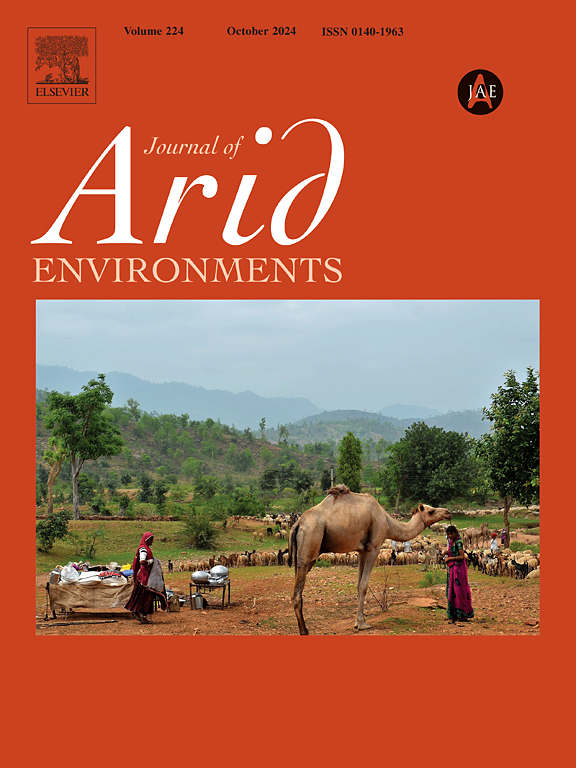Gastrointestinal parasites in rodent middens across the Atacama Desert of northern Chile
IF 2.6
3区 环境科学与生态学
Q2 ECOLOGY
引用次数: 0
Abstract
Deserts are unique ecosystems, characterized by extreme conditions and singular biodiversity. The Atacama Desert, South America, is one of the harshest environments on Earth. Rodent middens are valuable archives of desert ecosystems, offering insights into desert ecosystems worldwide. In the last years, rodent middens have been recognized as excellent sources of gastrointestinal parasites in dryland ecosystems. Parasites comprise a large portion of the world's biodiversity, and often play a crucial role in ecosystems. However, there is an overall dearth of knowledge of parasite ecological patterns and processes, especially from deserts. This study aims to investigate gastrointestinal parasite assemblages from current rodent middens across the Atacama Desert, and discuss their distribution at the regional scale. A wide diversity of gastrointestinal parasites was revealed through coproparasitological studies. Eighteen parasitic taxa or morphotypes belonging to Nematoda, Cestoda and Coccidia were identified, and were associated with three rodent families (Chinchillidae, Cricetidae and Octodontidae). Higher parasite richness and number of eggs/oocysts were found at lower-latitude and mid-altitude regions, aligning with the primary productivity patterns of the region. The adaptation of rodents and their parasites to extreme conditions highlights the intricate relationships between species and their environments. This study underscores the value of rodent middens as crucial archives for assessing parasite presence in extreme environments; and emphasizes the importance of considering latitudinal and altitudinal variations in understanding parasite community patterns.
智利北部阿塔卡马沙漠啮齿动物的胃肠道寄生虫
沙漠是独特的生态系统,其特点是极端的条件和独特的生物多样性。南美洲的阿塔卡马沙漠是地球上环境最恶劣的地方之一。啮齿动物丘是沙漠生态系统的宝贵档案,提供了对全球沙漠生态系统的见解。近年来,啮齿动物已被认为是干旱生态系统中胃肠道寄生虫的良好来源。寄生虫占世界生物多样性的很大一部分,往往在生态系统中起着至关重要的作用。然而,关于寄生虫生态模式和过程的知识总体缺乏,特别是来自沙漠的知识。本研究旨在调查阿塔卡马沙漠现存啮齿动物胃肠道寄生虫的组合,并探讨其在区域尺度上的分布。通过肠道寄生虫学研究,揭示了胃肠道寄生虫的广泛多样性。共鉴定出线虫目、虫目和球虫目共18个寄生类群或形态型,隶属于3个啮齿动物科(金鼠科、蟋蟀科和章鱼科)。低纬度和中海拔地区的寄生虫丰富度和卵/卵囊数量较高,与该地区的初级生产力模式一致。啮齿类动物及其寄生虫对极端条件的适应突出了物种与其环境之间复杂的关系。这项研究强调了啮齿动物丘作为评估极端环境中寄生虫存在的重要档案的价值;并强调了考虑纬度和海拔变化对理解寄生虫群落格局的重要性。
本文章由计算机程序翻译,如有差异,请以英文原文为准。
求助全文
约1分钟内获得全文
求助全文
来源期刊

Journal of Arid Environments
环境科学-环境科学
CiteScore
5.70
自引率
3.70%
发文量
144
审稿时长
55 days
期刊介绍:
The Journal of Arid Environments is an international journal publishing original scientific and technical research articles on physical, biological and cultural aspects of arid, semi-arid, and desert environments. As a forum of multi-disciplinary and interdisciplinary dialogue it addresses research on all aspects of arid environments and their past, present and future use.
 求助内容:
求助内容: 应助结果提醒方式:
应助结果提醒方式:


